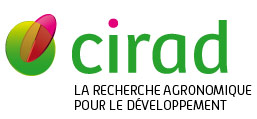Genetic and environmental dissection of biomass accumulation in multi-genotype maize canopies
Chen T.W., Cabrera-Bosquet L., Alvarez Prado S., Perez R., Artzet S., Pradal C., Coupel-Ledru A., Fournier C., Tardieu F.. 2019. Journal of Experimental Botany, 70 (9) : p. 2523-2534.
DOI: 10.1093/jxb/ery309
Multi-genotype canopies are frequent in phenotyping experiments and raise increasing interest in agriculture. Radiation interception efficiency (RIE) and radiation use efficiency (RUE) have low heritabilities in such canopies. We propose a revised Monteith equation that identifies environmental and genetic components of RIE and RUE. An environmental term, component of RIE, characterizes the effect of the presence/absence of neighbours on light interception. The ability of a given plant to compete with its neighbours is then identified, which accounts for the genetic variability of RIE of plants having similar leaf areas. This method was used in three experiments in a phenotyping platform with 765 plants of 255 maize hybrids. As expected, the heritability of the environmental term was near-zero, whereas that of the competitiveness term increased with phenological stages, resulting in the identification of quantitative trait loci. In the same way, RUE was dissected in an effect of intercepted light and a genetic term. This approach was used for predicting the behaviour of individual genotypes in virtual multi-genotype canopies. A large effect of competitiveness was observed in multi-genotype but not in single-genotype canopies, resulting in a bias for comparing genotypes in breeding fields.
Documents associés
Article (a-revue à facteur d'impact)
Agents Cirad, auteurs de cette publication :
- Perez Raphaël — Bios / UMR AGAP
- Pradal Christophe — Bios / UMR AGAP
